This post may contain affiliate links, which means I’ll receive a commission if you purchase through my links, at no extra cost to you. Please read full disclosure for more information.
Discover how to make a red fruit pavlova, a dessert full of lightness and freshness. Made with a crisp French meringue, it's then topped with whipped cream for extra softness, followed by fresh fruit. Although it looks intimidating, it's actually easy and even unstoppable with all my tips!
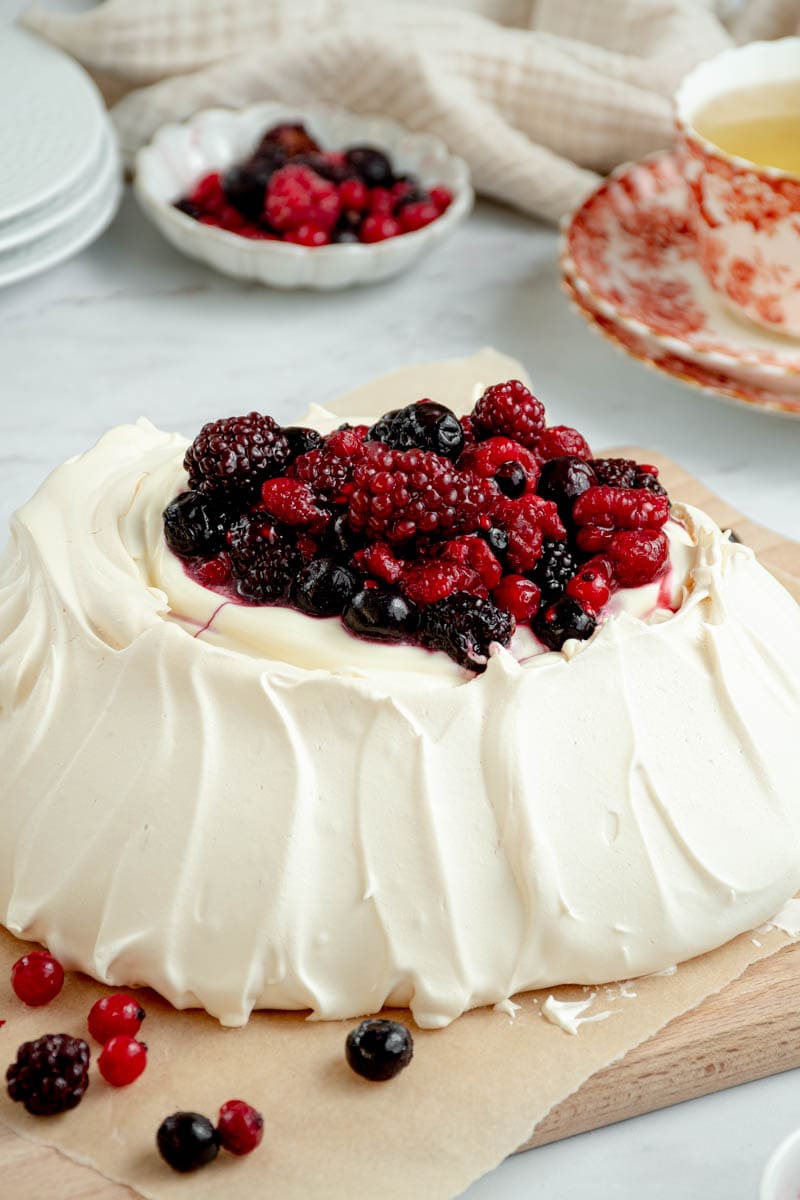
If you love pavlova, you're going to love this exotic fruit version.
🤔 What is Pavlova?
It's a dessert made with French meringue, whipped cream and fruit, named in 1926 in honor of the Russian ballerina Anna Pavlova, still considered the best classical ballet dancer. It then toured the world, stopping off in Australia and New Zealand, which explains why both countries claim to have created it.
It's super crispy and crunchy on the outside, and soft and melt-in-your-mouth on the inside. Topped with a light, barely sweetened whipped cream and fresh fruit.
💙 Why you'll love it
- It's incredibly good, REALLY good !
- I know that pavlova is a cake that can seem complicated and intimidating to make, but with all my tips, it's impossible for you to fail!
- It's perfect for special occasions, like birthdays and anniversaries.
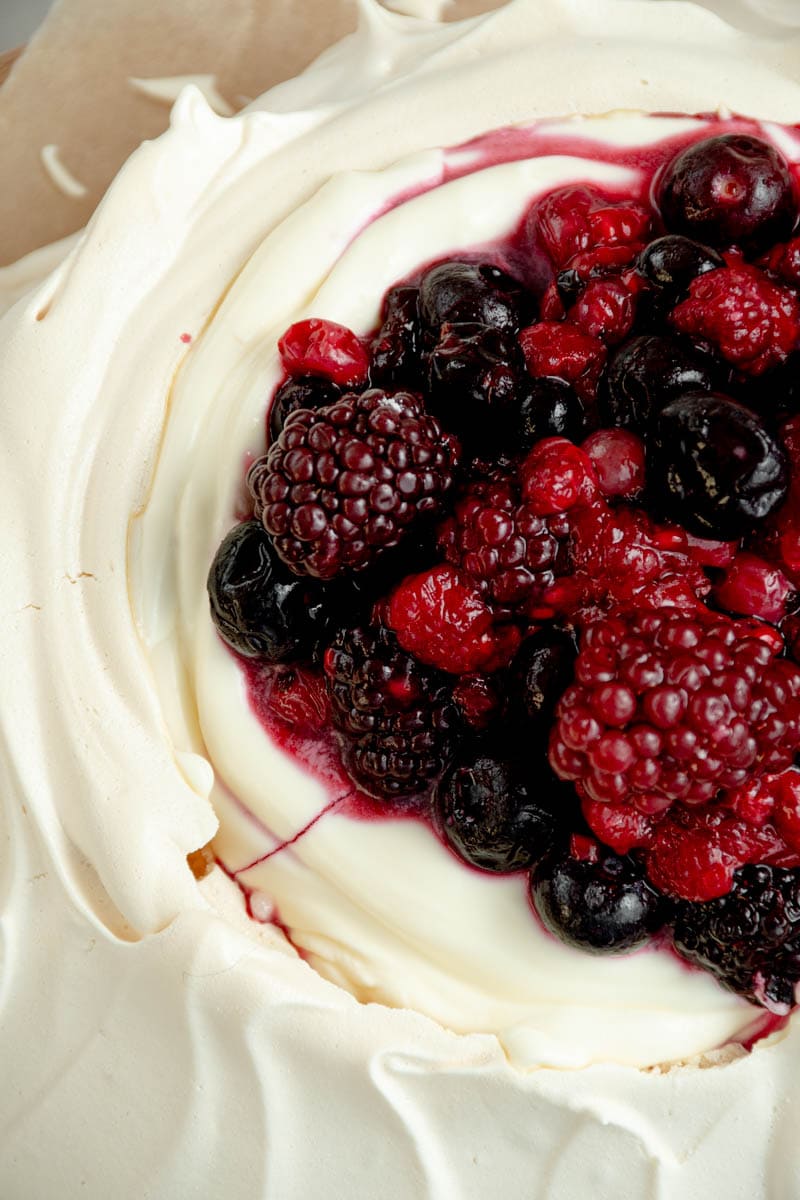
🥚 Ingredients
These are the main ingredients, and the quantities can be found in the recipe card below.
- Egg whites: ideally pasture-raised organic. You can refer to the Eco Tips I've written on eggs to help you choose the right ones.
- Powdered sugar: this is the finest type of sugar and will dissolve best in the egg whites. Do not use any other type of sugar instead (white, brown, coconut, etc.)!
- A little white vinegar: to help whites rise and prevent lumps.
- A little cornstarch: for a meringue that's crisp and crunchy on the outside, and soft on the inside.
- Vanilla extract: to lightly perfume the meringue.
- Heavy cream
- Mascarpone.
- Red fruit: fresh in summer and frozen in winter. You can also vary the pleasures by replacing them with other fruits: pears, clementines, passion fruit, kiwis, peaches, figs, plums, mangoes, oranges, grapefruit, grapes, etc...
✅ Gluten-free version
To make this recipe gluten-free, remove the white vinegar or check the label. Mascarpone and crème fleurette are normally gluten-free, but check this too.
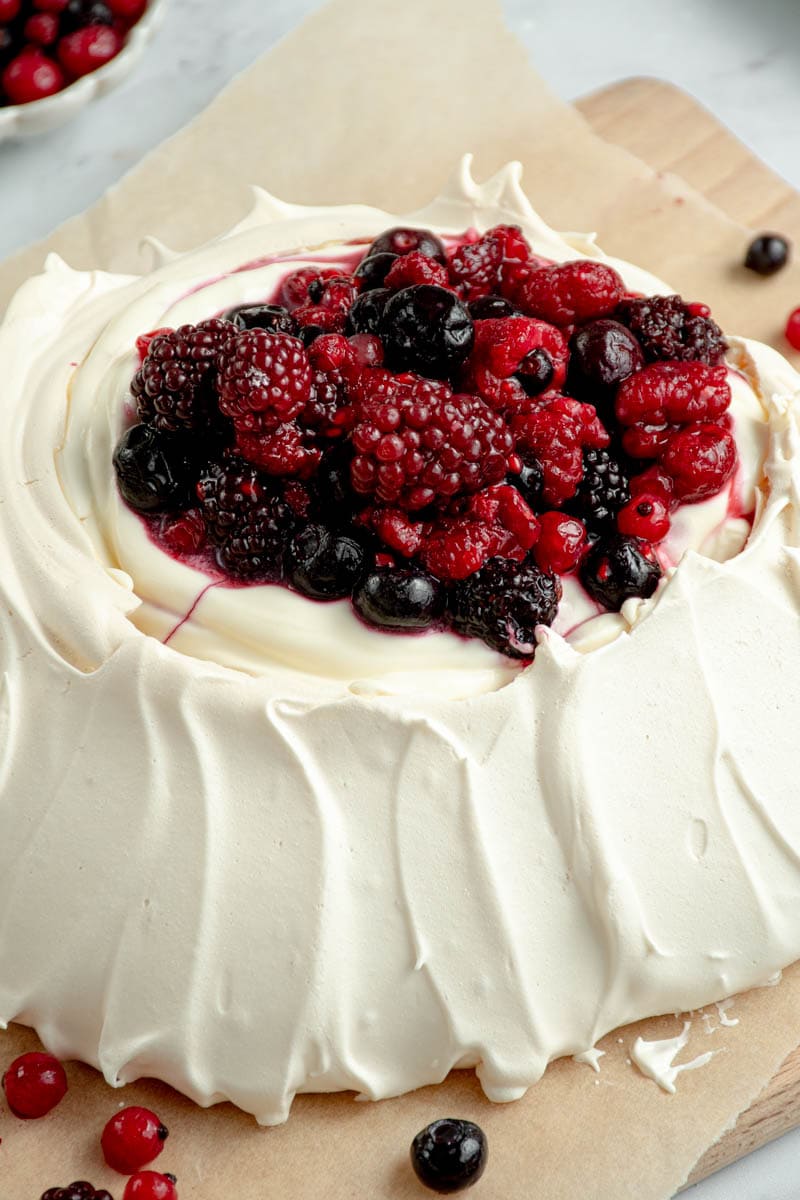
🥰 Chef's tips
Ingredients and utensils
As European, I'm used to working in grams and milliliters. For savory dishes, the American measuring system can work just perfectly. But for anything sweet, I really recommend using a digital scale, which is much more precise. That way, you'll be sure to succeed with your recipes.
- Use eggs that have been at room temperature for at least 1 hour (personally, I never keep my eggs in the fridge).
- Be very careful when separating the egg whites from the yolks: there must be absolutely no fat (such as egg yolk) in the whites, otherwise they won't rise.
- Use clean, dry and cold utensils (if they come out of the machine hot, it won't work).
- You don't need salt to beat egg whites: it's a legend.
Preparing the egg whites
- Take your time whipping your egg whites and increase the speed of your mixer very gradually, so they hold much better. In terms of chemistry, when you whip up egg whites, you gradually incorporate air bubbles. The slower you raise your whites, the smaller and tighter the bubbles will be, and the better they will hold.
- To check that your meringue is ready : a peak should form when you remove the beater from the bowl, known as a bird's beak. If it stands on its own, the meringue is ready.
- Once ready, place the meringue on baking paper, decorate and place in a hot oven quickly, so that it doesn't fall apart.
Baking
- To bake, choose a slow, gentle method, which will produce a very white meringue.
- Use your oven's fan-forced heat mode: when baking, the heat will be evenly distributed and you'll obtain a homogeneous meringue.
- During baking: NEVER open the oven door under any circumstances. You risk it falling back or cracking.
- Don't neglect the meringue's "drying" time: it's crucial and imperative.
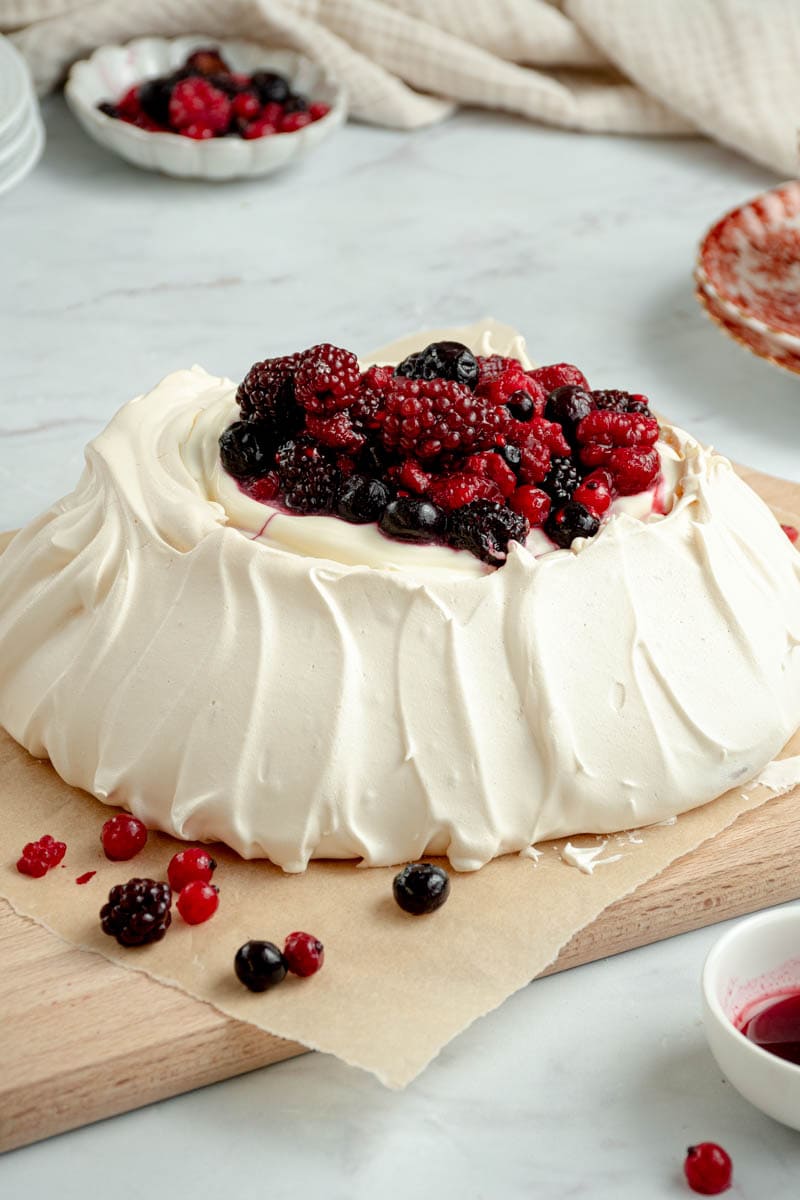
💡 Frequently Asked Questions
Probably because your oven temperature was too high.
Two reasons for that: you whipped your egg whites too quickly, and the air bubbles weren't tight enough, or the oven was too hot.
You can prepare the meringue the night before and let it dry in the turned-off oven overnight (without opening the door, as always). However, fill it with whipped cream and fruits at the last moment.
I've never tried it, but I suppose you could draw a larger circle, about 20 cm/7.8-inches. Baking and drying time will also have to be longer.
❄️ Storage
The French meringue that makes up the pavlova can be kept on its own for 1 week at room temperature. But once topped with whipped cream and fruit, I advise you to keep it in the fridge and eat it as soon as possible (max. within 24 hours) because the more time passes, the more it will soften.
🍑 Other fruit desserts
If you make this red berries pavlova, it would be so nice to leave me a comment and rate the recipe ⭐️⭐️⭐️⭐️⭐️. You can also tag me on Instagram, Pinterest, Facebook or Tik Tok, or even send me a photo, I love seeing my little dishes in your homes!
📖 Recette
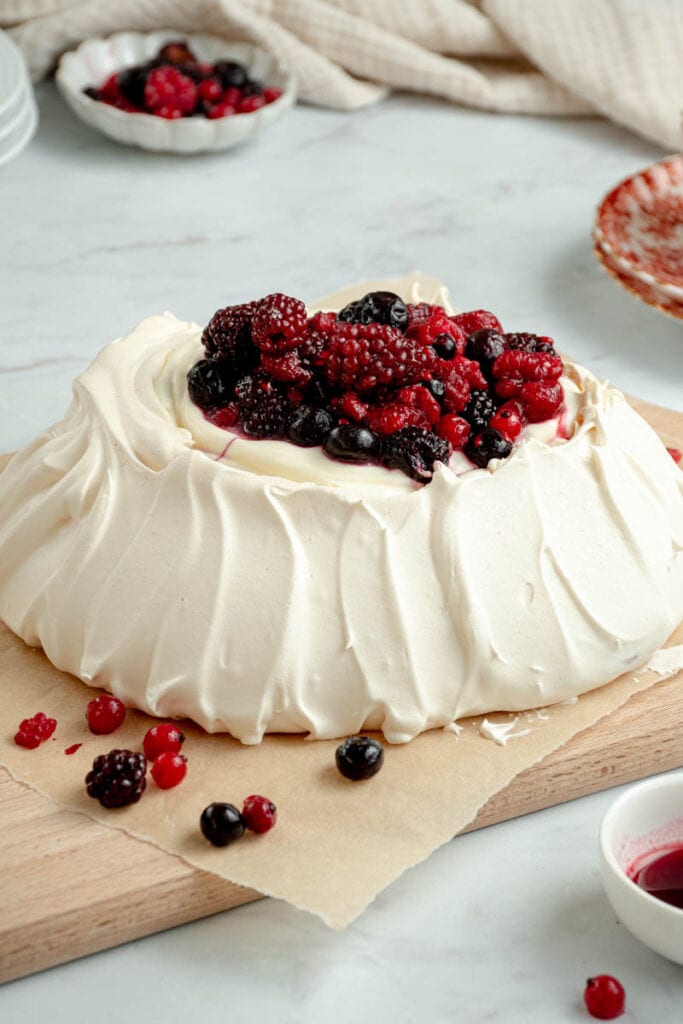
Red berries pavlova
Ingredients
For the meringue
- 4 large egg whites approximately 110 grams
- 1 cup powdered sugar (120g)
- 1 teaspoon white vinegar
- 1 teaspoon cornstarch
- 1 teaspoon vanilla extract
For the mascarpone whipped cream
- ½ cup heavy cream (120g)
- ¼ cup mascarpone cheese (55g)
- 1 tablespoon powdered sugar
For the filling
- 5 oz fruits of your choice here red berries (150g)
Instructions
The meringue
- Sift the powdered sugar and set aside. Whip the egg whites at low speed with your electric mixer. When they start to foam, increase the speed slightly.
- Add the sifted powdered sugar, vanilla extract, white vinegar and cornstarch while continuing to beat.
- Beat until stiff (this may take a good quarter of an hour, or even 20 minutes). When you remove the beater from the bowl, a peak should form on the meringue (called a bird's beak). If it stands on its own, the meringue is ready; if not, continue beating.
- On a sheet of parchment paper, trace a 16 cm/6.30 inches diameter circle with a ruler and pencil.
- Preheat your oven to 203°F/95°C in fan-assisted mode. Place your meringue on the parchment paper and, using a large spoon, work your way up and over the edges of the meringue to give it a nice shape. Also use the spoon on the top of the meringue to form an indentation (this is where you'll put the whipped cream, so there should be a little room).
- Once the oven is hot, place in the oven and bake for 1h30. Caution: never open the oven door.
- At the end of the baking time, turn off the oven and leave the meringue inside for a further 2 hours to dry. Never open the oven door!
Mascarpone whipped cream
- Once the meringue is dry and cold, move on to the mascarpone whipped cream: start by sifting your powdered sugar, then set aside. Place the whipping cream and mascarpone in a bowl. Beat with an electric mixer and when the whipped cream begins to stiffen, add the powdered sugar.
- Continue beating until stiff. If you move your bowl and the whipped cream doesn't move, it's ready!
Assembly
- Top your meringue with the whipped cream, add the fruit of your choice and voilà, the pavlova is ready to eat!
Notes
- As European, I'm used to working in grams and milliliters. For savory dishes, the American measuring system can work just perfectly. But for anything sweet, I really recommend using a digital scale, which is much more precise. That way, you'll be sure to succeed with your recipes.
- Storage - The pavlova meringue can be kept on its own for up to 1 week at room temperature. But once it's been filled with whipped cream and fruit, keep it in the fridge and enjoy it as soon as possible (max. 24 hours), as the longer it sits, the softer it will become.

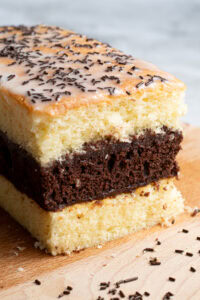

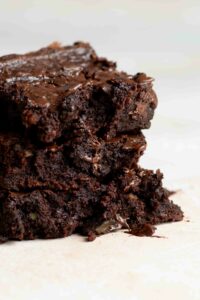
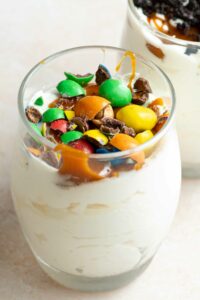
Répondre